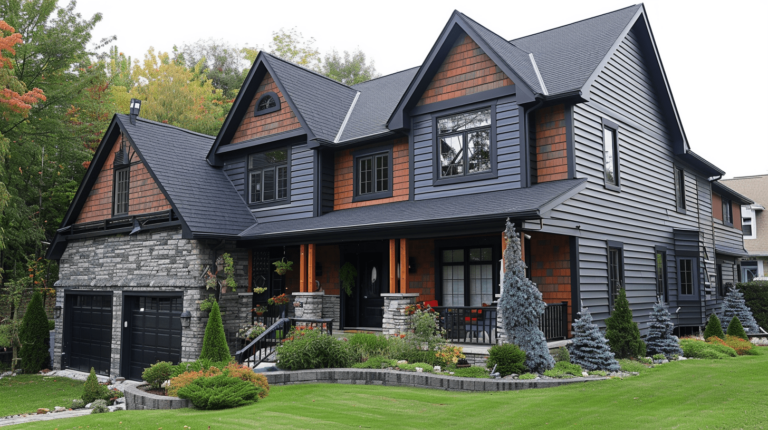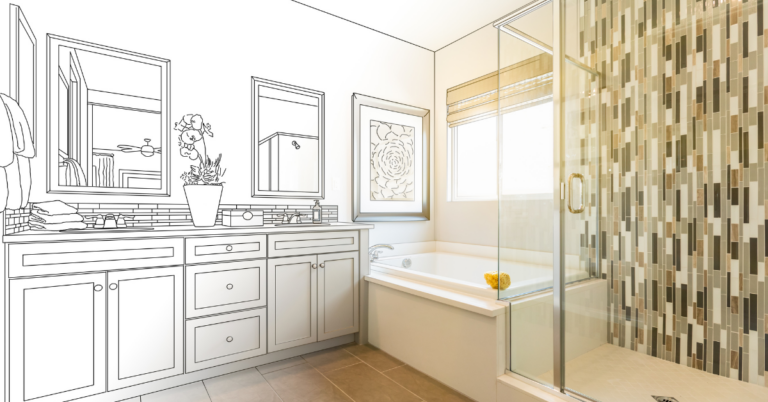Planning a home remodel can feel like an overwhelming task. There are so many moving parts, and with the excitement of transforming your living space comes a great deal of planning, budgeting, and decision-making. One of the most common questions homeowners face when remodeling their homes is: when remodeling a house, what comes first? Understanding the proper sequence of steps can save you time, money, and frustration, ensuring a smoother process and a result that exceeds your expectations.
This step-by-step guide will walk you through the essential stages of a home remodel, providing clarity on the critical tasks to complete first and why they are important. Whether you’re renovating your kitchen, adding a bathroom, or revamping your entire home, the insights here will help you make the right decisions at every stage.
Key Takeaways
- Planning is Key: Before starting any remodeling project, thorough planning is crucial for setting the foundation of a successful project.
- Structural Changes First: Any structural work—such as framing, plumbing, and electrical updates—should always come before cosmetic changes.
- Permits Matter: Make sure to secure the necessary permits before proceeding with your remodel to avoid delays or legal complications.
- Design and Layout: Finalizing the design and layout should come early to avoid conflicts with contractors and materials.
- Budget Considerations: Establishing a realistic budget up front helps guide decisions throughout the project, ensuring you don’t exceed your financial limits.
- Choosing a Contractor: Selecting the right contractor early on can make all the difference in the efficiency and quality of your remodel.
Overview
Remodeling a home isn’t just about picking out new tiles or updating your cabinets; it’s about following a strategic approach to ensure that everything falls into place. When remodeling a house, what comes first often depends on the scope of the project. For example, if you’re simply updating the aesthetics, the sequence will be different from a remodel that involves structural changes.
In this overview, we’ll break down the general process for remodeling your home, with a focus on the important initial steps. From initial planning and securing permits to hiring contractors and preparing your space, this guide will help you navigate the process smoothly.
When Remodeling a House, What Comes First?
Step 1: Plan and Define Your Goals
Before you dive into any remodeling work, it’s essential to sit down and think through the goals of your project. When remodeling a house, what comes first is determining the scope and purpose of the remodel. Are you looking to update the style of a room, increase functionality, or enhance your home’s value? Are you adding new rooms or changing the layout entirely?
Key considerations include:
- The budget: How much are you willing to spend?
- The timeline: When do you want the project completed?
- Desired outcomes: Are you aiming for increased space, better energy efficiency, or a fresh aesthetic?
At this stage, you can also research contractors, gather inspiration from design magazines or websites, and begin forming a vision for your remodel.

Step 2: Hire a Contractor
Once you have a solid idea of what you want, it’s time to hire a contractor. When remodeling a house, what comes first is selecting a skilled and trustworthy professional. A good contractor can help you refine your plans, advise you on what’s feasible within your budget, and ensure that the work is completed to a high standard.
Look for contractors with experience in the type of remodel you’re undertaking. For example, if you’re adding an addition, make sure the contractor specializes in that type of construction.
Monarca Construction and Remodeling LLC, located at 3971 Patrick Ct, Bellingham, WA 98226, is a trusted name in home remodeling. You can reach us at (360) 392-5577 for a consultation or to discuss your next project.
Step 3: Secure Permits and Approvals
Permits are often required for major remodels, particularly those that involve structural changes or the installation of new plumbing or electrical systems. Before the work begins, it’s crucial to ensure that your remodel is in compliance with local building codes and regulations.
- When remodeling a house, what comes first in this case is applying for permits. This ensures that you don’t run into legal or safety issues during or after the remodel.
- Depending on your location and the scope of the project, permits could cover anything from plumbing and electrical work to structural changes and exterior modifications.
Always check with your local building department for the necessary permits and timelines.
Step 4: Demolition and Structural Work
Once the permits are in place, and your contractor is ready, it’s time to start the physical work. When remodeling a house, what comes first in terms of actual construction is demolition and structural changes. This includes tearing down walls, moving plumbing or electrical lines, and reinforcing any areas that need structural support.
At this stage, the project begins to take shape. If you’re planning to move walls or add new rooms, this is where the real transformation happens.

Step 5: Install Plumbing, Electrical, and HVAC Systems
After the demolition and structural changes, the next step is to install or upgrade your plumbing, electrical, and HVAC systems. This is a crucial stage because it ensures that your home is functional and up to code.
Plumbing may involve new pipes, fixtures, or even relocating plumbing for a new bathroom or kitchen layout. Electrical work might include installing new outlets, lighting fixtures, or wiring for appliances. HVAC changes could involve upgrading or installing new systems for heating, ventilation, and air conditioning.
This step is critical, and it’s important to work with licensed professionals to avoid future problems.
Step 6: Insulation and Drywall
After the plumbing, electrical, and HVAC systems are in place, the next step is insulation. Proper insulation helps to regulate temperature and improves energy efficiency in your home. Once the insulation is installed, drywall is hung to create the basic structure of the walls and ceilings.
At this point, your remodel is starting to resemble its final form. The bones of the project are in place, and you can begin to visualize how the space will look.
Step 7: Flooring and Interior Finishes
After the structural work is completed, it’s time to install the flooring and interior finishes. When remodeling a house, what comes first after drywall and insulation are in place is typically the flooring. Whether you’re installing hardwood, tile, carpet, or vinyl, flooring should be done before painting or installing trim.
Once the floors are in, it’s time to move on to the finishing touches like cabinetry, lighting fixtures, countertops, and painting. These final touches will transform your space into something that feels brand new.
Step 8: Final Inspection and Clean-Up
Once all the work is complete, it’s important to schedule a final inspection to ensure everything is up to code. The last step is cleaning up the space, removing debris, and preparing your home for use.
Now that you have a clear understanding of what comes first in a home remodel, it’s time to take action! If you’re planning a home remodel, don’t go it alone—let Monarca Construction and Remodeling LLC guide you through the process. We’ll work with you every step of the way, ensuring your project is completed to the highest standards.
Contact us at 3971 Patrick Ct, Bellingham, WA 98226, or call us at (360) 392-5577 for expert advice and high-quality remodeling services.
FAQs
Q1: When remodeling a house, what comes first?
A.The first step in any home remodel is planning. From there, you’ll need to hire a contractor, secure permits, and start with demolition and structural work before moving on to plumbing, electrical, and finishes.
Q2: Do I need permits for my remodel?
A. Yes, depending on the nature of the remodel, you may need permits for plumbing, electrical work, structural changes, or even cosmetic changes. Always check with your local authorities to ensure you’re compliant with building codes.
Q3:How long does a typical home remodel take?
A.The timeline for a home remodel can vary widely depending on the scope of the project. Small updates may take a few weeks, while larger remodels can take several months. Planning ahead and coordinating with your contractor will help you manage the timeline effectively.
Q4:Can I remodel my home on a budget?
A.Yes, with careful planning and prioritizing, it’s possible to remodel on a budget. Focus on the most important areas first and make adjustments to non-essential aspects if necessary.
Q5: Do I need a contractor for my home remodel?
A.While some minor home improvement projects can be done yourself, it’s always recommended to hire a professional contractor for major remodels. A skilled contractor will help ensure the project runs smoothly, meets building codes, and is completed to a high standard.

Conclusion
Remodeling a home is a rewarding project, but knowing when remodeling a house, what comes first is key to ensuring a smooth and successful renovation. By planning properly, hiring the right professionals, securing permits, and tackling structural work first, you can avoid costly mistakes and create a space that’s both functional and beautiful.




